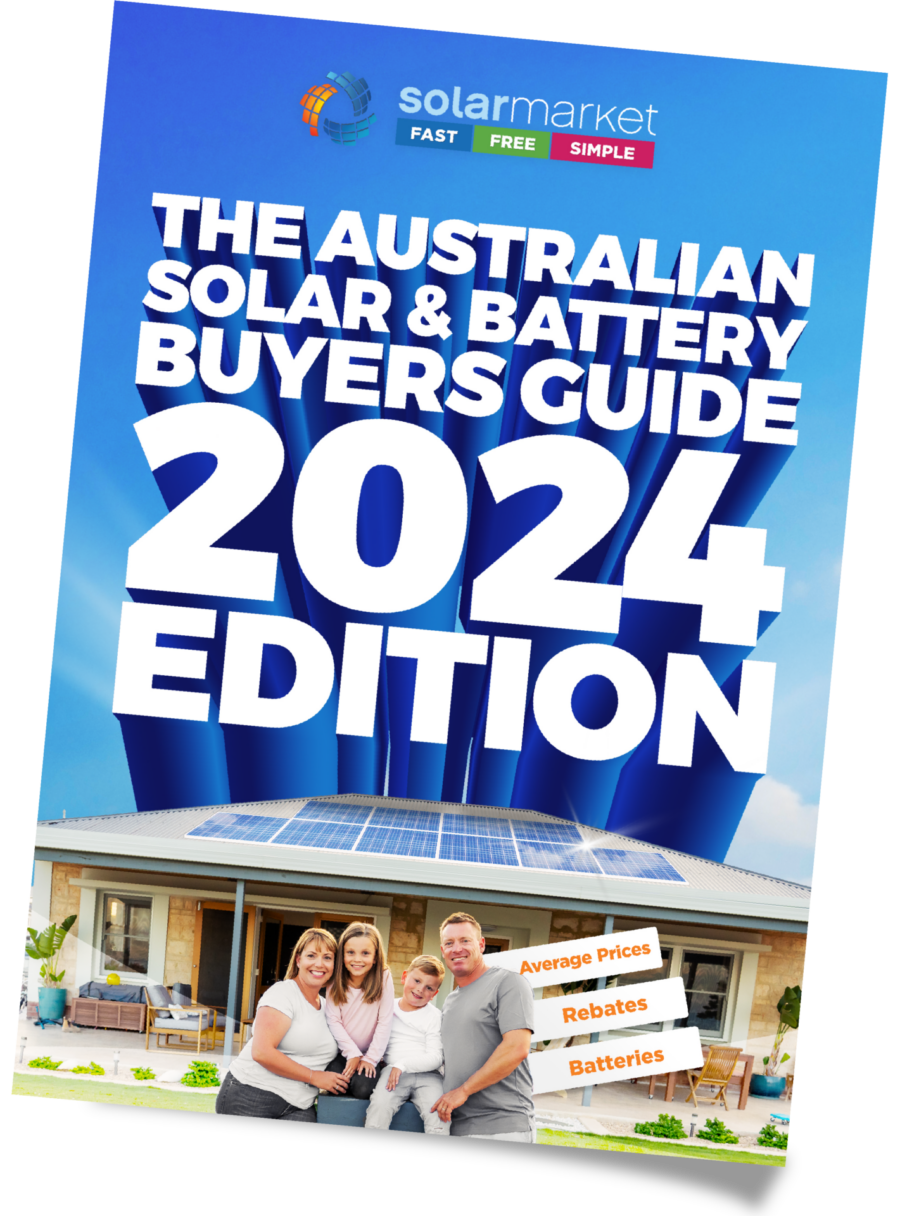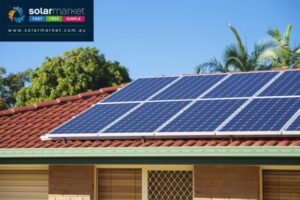
And Australians have taken up that option in spades!
Over 1.5 Million Aussie homes now have a solar power system on their roof and that number is growing regularly.
However, given there are over 8 Million homes in Australia, that still means approximately 6.6 Million haven’t taken the leap and gone solar.
Putting aside renters (since they rarely buy solar), that still leaves a lot more homeowners who haven’t yet jumped on board with solar than those who have.
So, we thought we’d review the facts & figures (and numbers) to help you determine if solar is right for you or not.
Who Is Solar Right For?
First, let’s look at what kind of home is suited to solar.
Put simply, solar’s a great investment if:
- You own your own home
- Your average bill is over $100
- You have enough room on your roof to fit at least 8 solar panels
- You don’t have too much shade over your roof between 9am and 3pm
- You plan on being in the house longer than 3 years
Moving on from there, some households are particularly good candidates for solar. Do you fall into one or more of the below options?
Are You A Prime Candidate For Solar?
As just mentioned, there are some homes that are especially well suited to going solar. They are typically high energy users during the daytime (since solar obviously doesn’t work at night time).
Examples include:
- Homes with a swimming pool or spa (pool pumps use HEAPS of power and usually need to be run for multiple hours every day)
- The other biggie is airconditioning. Most aussie homes have aircon (it’s a nightmare in summer without it) and they draw a HEAP of power (as much as 40% of your daily consumption)!
- In winter, if you use electric heating of any sort (including those power hog small electric fan heaters everyone seems to own), you’ll also benefit from having solar.
- Homes with large fish tanks (with bigger filters & pumps) use a lot of power 24×7. Most fish lovers probably never stopped to think how much it adds to their overall power bill.
- Ditto for homes with a pond or water fountain. If their electric pump runs a large part of the day, that’s definitely boosting their power bill.
- One item a lot of people never think about is their lights. Especially in this day of halogen downlights being all the rage, 10 or 20 of them can REALLY add up so far as power consumption goes. People sometimes forget to look at their ceiling and actually count all the lights they have, and even the low energy ones still consume power. If you have lots of them, it all costs money to run!
- What about if you do a fair bit of cooking and you have an electric stove/oven? If 3-4 of your electric hot plates &/or the oven are running to cook a meal, that costs you even more money in your regular power bills.
- Another one you might never have thought about is all the TV’s, computers, tablets & phone chargers plugged in and running around the house. Combined, their power usage can add up to a decent amount of expense each year!
- Lastly, perhaps one of the biggest opportunities for reducing power bills with solar comes from homes where one or more people are usually there during the day. Whether you are a stay at home parent or you run a business from home or are retired, this means you are DEFINITELY using more electricity during the day than those folks who go off to work 5 days a week!
One last thought: The more people in your house (whether adults, children or a combination), the bigger your power bill will be! If the kids get home from school, you can bet they usually turn all the lights, the computers and the TV on (plus aircon in the summer) and increase your power bill even BEFORE night time begins! AND, let’s not forget the weekend, when most families are home during the daytime.
How Much Power Does An Average Home Use?
Realistically, this is a difficult question to answer, because every home is different.
However, according to figures supplied by the government’s Energy Made Easy site, a sample/average house in a sample suburb like Crows Nest (NSW) would have the following estimated average power consumption figures:

You can use the Energy Made Easy benchmark tool to estimate your own energy needs. Obviously every home’s circumstances are different, so if you don’t have easy access to your power bills for the last year, this free tool is a good way to get an estimate of your specific circumstances.
If you know what your power consumption figures are, you can then multiple the kWh number by the rate your energy retailer charges and come up with an estimated monthly and yearly power bill total.
How Much Does Solar Power Actually Save You?
From here, the way to figure out savings from installing solar is to estimate how much power you can offset with solar during the daytime.
To make it simple, let’s work up a few examples.
- If your yearly power usage is 5700 kWh (that’s a 2 person home with no gas or pool in Crows Nest) and you only use 50% of your power during the daytime, that means you could potentially offset up to (5700 x 0.5) = 2,850 kWh over a year. At an estimated 24 cents per kWh (the grid power cost) you could save nearly $700/year ($684 more precisely) in power bills.
- If your yearly power usage is 8300 kWh (that’s a 2 person home with a pool but no mains gas in Crows Nest) and you only use 50% of your power during the daytime, that means you could potentially offset up to (8300 x 0.5) = 4,150 kWh over a year. At an estimated 24 cents per kWh (the grid power cost) you could save nearly $1,000/year ($996 more precisely) in power bills.
- If your yearly power usage is 7300 kWh (that’s a 4 person home with no gas or pool in Crows Nest) and you only use 50% of your power during the daytime, that means you could potentially offset up to (7300 x 0.5) = 3,650 kWh over a year. At an estimated 24 cents per kWh (the grid power cost) you could save nearly $880/year ($876 more precisely) in power bills.
- If your yearly power usage is 10,000 kWh (that’s a 4 person home with a pool but no mains gas in Crows Nest) and you only use 50% of your power during the daytime, that means you could potentially offset up to (10000 x 0.5) = 5,000 kWh over a year. At an estimated 24 cents per kWh (the grid power cost) you could save up to $1,200/year in power bills.
If – through sensible modification of power use (switching as much discretionary power use to daytime as possible) – you could boost your daytime usage to 75% of your total power needs, then the savings become even bigger!
- If your yearly power usage is 5700 kWh (that’s a 2 person home with no gas or pool in Crows Nest) and you use 75% of your power during the daytime, that means you could potentially offset up to (5700 x 0.75) = 4,275 kWh over a year. At an estimated 24 cents per kWh (the grid power cost) you could save nearly $1,030/year ($1,026 more precisely) in power bills.
- If your yearly power usage is 8300 kWh (that’s a 2 person home with a pool but no mains gas in Crows Nest) and you use 75% of your power during the daytime, that means you could potentially offset up to (8300 x 0.75) = 6,225 kWh over a year. At an estimated 24 cents per kWh (the grid power cost) you could save nearly $1,500/year ($1,494 more precisely) in power bills.
- If your yearly power usage is 7300 kWh (that’s a 4 person home with no gas or pool in Crows Nest) and you use 75% of your power during the daytime, that means you could potentially offset up to (7300 x 0.75) = 5,475 kWh over a year. At an estimated 24 cents per kWh (the grid power cost) you could save nearly $1,320/year ($1,314 more precisely) in power bills.
- If your yearly power usage is 10,000 kWh (that’s a 4 person home with a pool but no mains gas in Crows Nest) and you use 75% of your power during the daytime, that means you could potentially offset up to (10000 x 0.75) = 7,500 kWh over a year. At an estimated 24 cents per kWh (the grid power cost) you could save up to $1,800/year in power bills.
OBVIOUSLY these numbers will vary widely from home to home, as every household’s electricity usage patterns vary, depending on the number of people in the house, number of electrical appliances used, high-energy use appliances and time of day use as just some factors to consider. To get a more accurate estimate of your potential savings, you NEED to speak to a solar installation firm who has the expertise to evaluate your needs and current consumption and help you choose a solar power system that fits your requirements. None of the above figures should be considered set in stone.
Calculating The Payback Time For Solar
Finally, if you determine that your house might be a good candidate for solar power, and you have an reasonable estimate of your power usage requirements and have figured out how much you can offset against solar (during the daytime), all you need to calculate a final payback estimate is to get 3 free quotes for solar and divide the price of the system you think you’ll buy by the estimated savings you can make per year.
If your system was $5000 (as an example) and you could save $684/year, you would have paid the system off in full (thanks to savings on your power bill) in 5000/684 = 7.3 years.
If your savings were higher (say $1200/year), it would be paid off in 5000/1200 = 4.1 years.
And if you were able to save $1800/year, that would only take 5000/1800 = 2.8 years!
The best part about solar is that a decent system will typically run for as long as 15-20-even 25 years, so every year after it’s paid in full is just straight profit (savings) in YOUR hand, not in the hands of the greedy energy companies.
Some people claim that investing the money for solar will generate bigger returns (usually not true) but one thing they forget is that earnings on investments and interest paid on money in the bank is taxable, whereas money saved is not. This puts solar even further ahead of investing the money in terms of ROI.
And as power prices continue to rise, the actual return on investment also rises, since you are offsetting the same amount of power at a higher grid price.
Get 3 Free Quotes for solar started today by using our no-obligation service. We have already helped 132,646 households get free quotes for solar since we started in 2010. Now it’s your turn to find out if solar is right for you!










